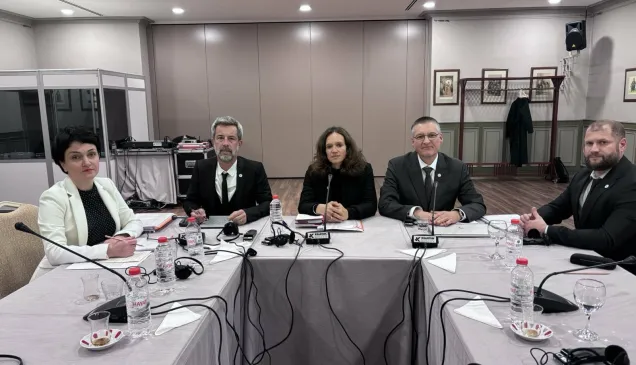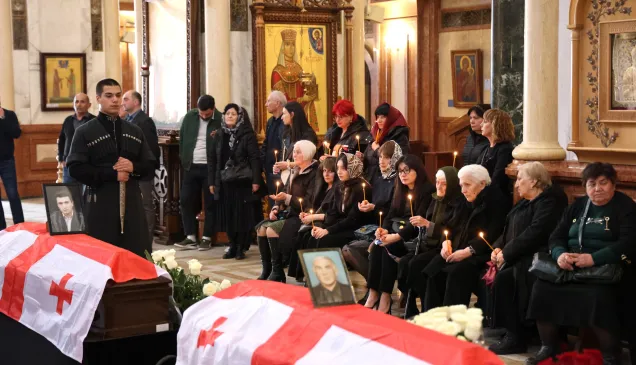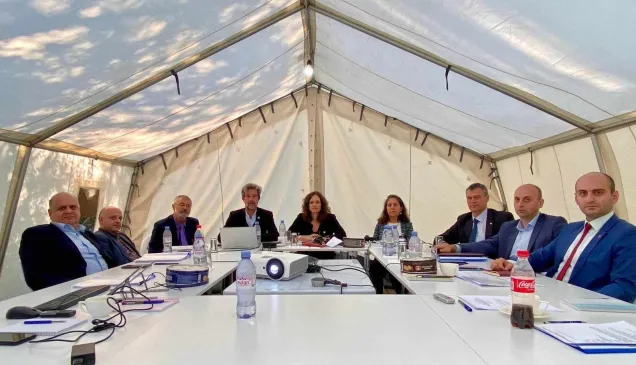Georgia: A bittersweet moment as families receive the remains of missing relatives
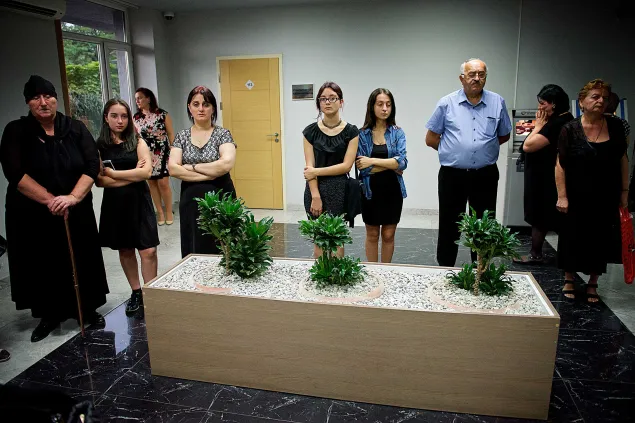
Families wait in the hall at the NFB for the information session with forensic specialists. The Georgian Ministry of Internally Displaced Persons and Refugees, along with the NFB, organized the session as part of the handover of human remains.
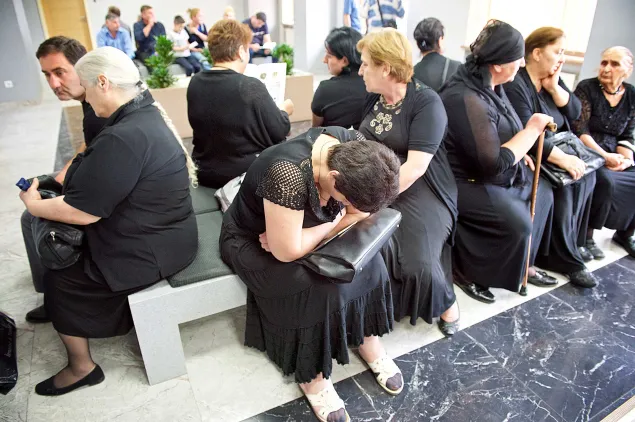
Tbilisi, Georgia, September 2016
When the information session ended on this sombre occasion, some of the family members viewed the remains of their loved ones, displayed in a dignified manner, at the Tbilisi morgue. The families also received documents, prepared by the ICRC, and used to support the identification of their relatives’ remains.
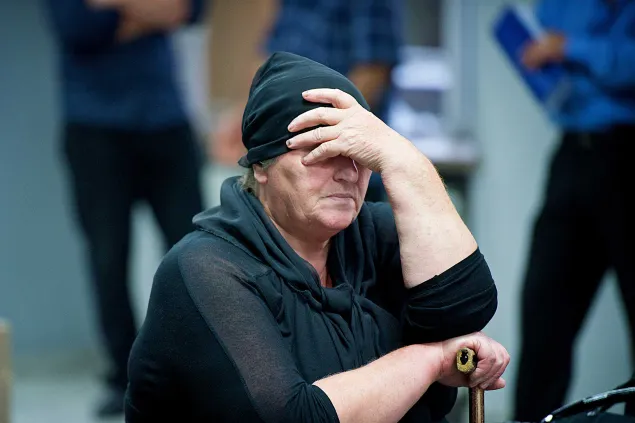
Tbilisi, Georgia, September 2016
After viewing the remains of her son, it is hard to take it all in for this grieving mother. He was just 18 when he disappeared in 1993.
Since setting up the Coordination Mechanism, the ICRC has worked tirelessly with all the parties concerned to address the issue of missing persons.
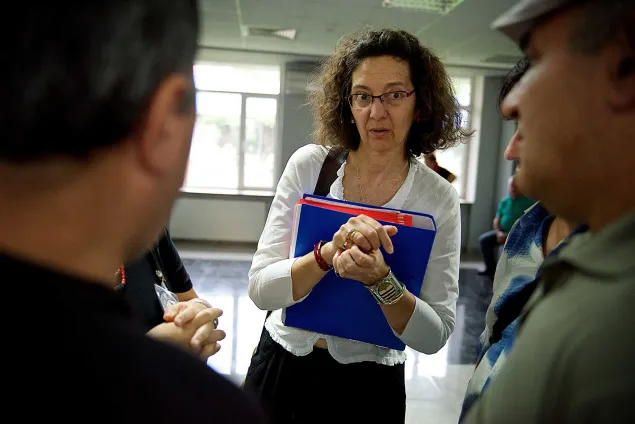
Tbilisi, Georgia, September 2016
Representatives of families of missing people speak to Ana Maria Boza Arlotti, an ICRC forensic expert. She was on hand to answer the families’ questions. The ICRC is the only organization in the world that offers forensic assistance strictly for humanitarian purposes.
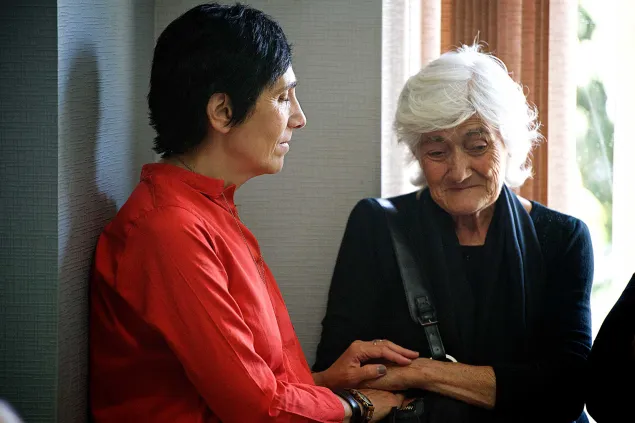
Tbilisi, Georgia, September 2016
Nana Agapishvili, a psychologist working with the ICRC partner non-governmental organization, “Ndoba” (Trust), supports family members during the handover.
Through its local partners, the ICRC provided psychosocial support to the families prior to, during and after the handover, to help them cope with distress.
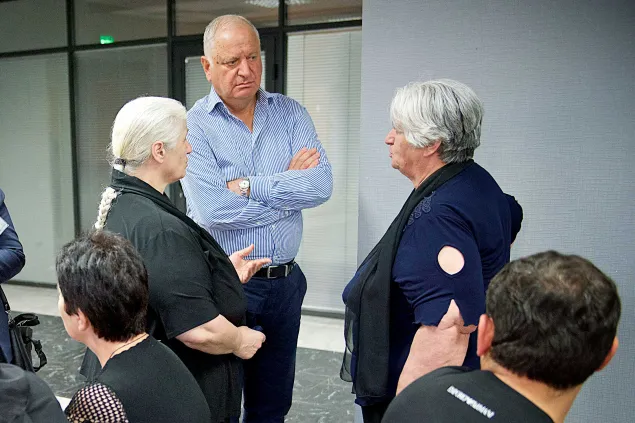
Tbilisi, Georgia, September 2016
Mr Gogi Patsatsia, Georgia’s Deputy Minister for Internally Displaced Persons and Refugees, who is one of the Georgian participants in the Coordination Mechanism, meets at the NFB with representatives of families of people previously reported missing but whose remains have now been identified.
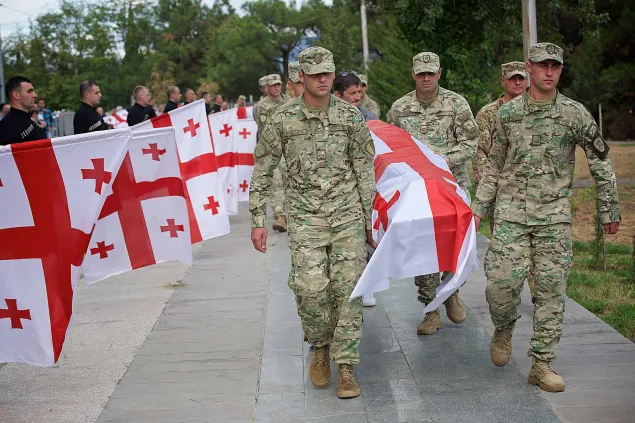
Tbilisi, Georgia, September 2016
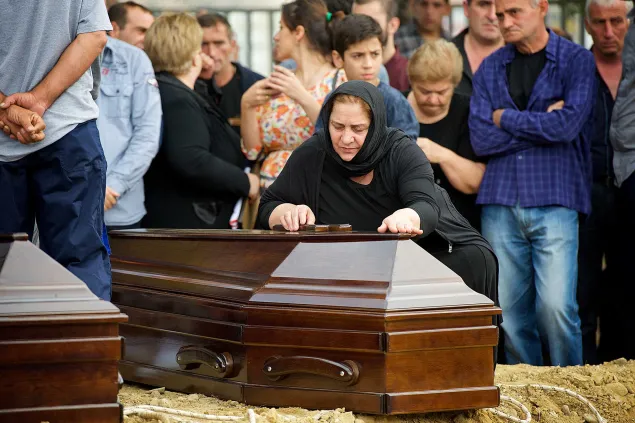
Tbilisi, Georgia, September 2016
Families attend an official ceremony at the Brotherhood Cemetery. At last they can give their relatives a dignified burial, mourn them and begin to piece their lives back together. “It was a hard day for us all, but we were grateful to finally have a grave for our loved one”, commented one family member. After 24 years of uncertainty it was a bittersweet moment for all the families concerned.
The armed conflict in Abkhazia in 1992 – 93 caused the disappearance of 2,373 people. Over 20 years later, families continue to seek answers about the fate and whereabouts of their loved ones. To address this issue, the ICRC is leading painstaking work to search for, exhume, analyse and support the identification of human remains. The result? On 14 September 2016, the remains of 17 people were handed over to their families in Tbilisi. They had been exhumed in 2015, 2014 and 2011 in different locations of Georgia/Abkhazia. And this was the third such handover in 2016.
Back in 2010 the ICRC set up the Coordination Mechanism to clarify, on strictly humanitarian grounds, the fate and whereabouts of people whose disappearance is linked to the conflict. Thanks to the Mechanism, which comprises Georgian and Abkhaz participants and is chaired by the ICRC, work began in 2013 to exhume and analyse human remains. So far it has helped identify the remains of 99 people, including 39 in 2016.

